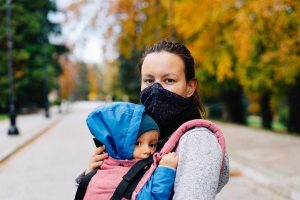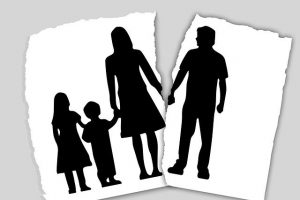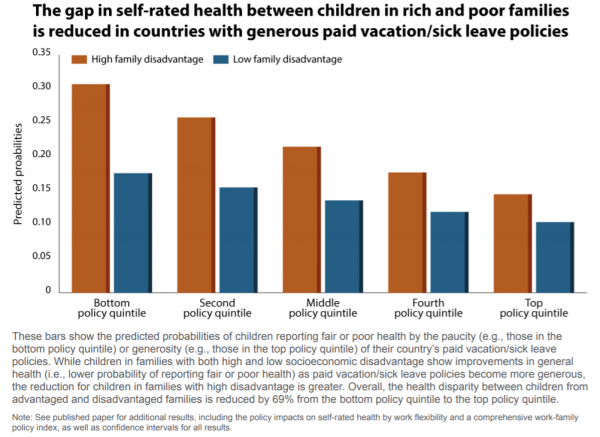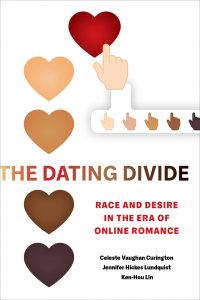By now it is well-known that Covid-19 exacerbates pre-existing economic and health inequities, something clearly shown in the disproportionate rates of mortality, unemployment, and food and housing insecurity in African American communities during this pandemic. This paper reports new research on another disparity that has been amplified by the pandemic — exposure of African American youths to community violence, often resulting in symptoms of Post-Traumatic Stress Disorder. Analysis of the behaviors that protect youth from experiencing such violence suggests that educators and psychologists need to rethink their understanding and treatment of PTSD in this population.
Even before the pandemic, as many as 97 percent of African American youth in some highly disinvested urban communities had witnessed at least one incident of community violence over the course of adolescence. But in 2020, the U.S. saw the largest single one-year surge in homicides since the government began compiling such records, with Chicago experiencing a 37 percent increase in murders during the first half of 2020 compared to the first half of 2019. These increases have disproportionately impacted Black communities. Violence exposure, compounded by elevated levels of deaths and hospitalization of loved ones, economic loss, food insecurity, and residential instability, has placed Black children and adolescents at the epicenter of loss during the pandemic. As students begin to transition back to in-person learning, school officials must be ready to respond to the effects of loss and trauma by relying on trauma-informed and trauma-responsive practices, rather than punitive discipline practices.
For African American children and teens, the recent increase in community violence is compounded by the stress of the pandemic, rise in hate crimes, and disproportionate exposure to incidents of police violence towards African American men and women, diminishing their sense of safety. This makes even more urgent the need for research that can help us understand and minimize the long-term negative effects of exposure to community violence on African American youth.
It is important to put this violence into perspective. Research with nationally representative samples of adolescents demonstrates that 85% of African American adolescents show little to no engagement in delinquent and risky behavior, with only 7% engaging in high levels of delinquent behavior and only 6% showing gang affiliation. Among all Americans, violent crime is clustered in areas of concentrated and severe poverty, but due to systemic racism and social stratification, African American Americans disproportionately reside in these areas. In some urban areas, for example, African Americans are almost four times more likely than other residents to live in neighborhoods where the poverty rate is 40% or higher.
Furthermore, engagement in violent behavior is not widespread even among African American youth in such severely deprived neighborhoods. Sociological research shows that violent crime in urban communities is concentrated in a very small network of individuals linked to one another by co-engagement in violent crimes. In Chicago, for example, 70 percent of all non-fatal shootings occur in networks comprising less than 6 percent of Chicago’s total population. But the activity of this small network affects everyone living in the neighborhood, so the impact of violent crime by a small number of residents on African American youth’s well-being is widespread.
Individuals who have been exposed to community violence often develop symptoms of Post-Traumatic Stress Disorder (PTSD), including a cluster of symptoms that characterize physiological hyperarousal. Hyperarousal symptoms are rooted in the body’s neurophysiological response to stress, and an important component of a hyperarousal response is hypervigilance, which refers to a state of extreme alertness and awareness of one’s surroundings. Hypervigilance enhances our ability to detect and react to threatening stimuli in our environment, while hyperarousal helps mobilize our body’s resources to maximize survival in the face of danger. Psychologists agree that these are appropriate and advantageous responses to an emergency.
However, hyperarousal and hypervigilance that persist after the emergency has passed have traditionally been considered to be debilitating and maladaptive. For youth exposed to community violence, posttraumatic hyperarousal can lead youth to overreact to perceived threats. As such, educators and psychologists see such reactions as disruptive behaviors or hyperactivity that youths must be taught to overcome. But is it possible that maintaining a fairly constant level of hyperarousal and hypervigilance in the context of persistent community violence could actually be protective rather than maladaptive?
That is certainly how some young men see it themselves. For example, in 2012 and 2013, Smith and Patton (2016) conducted in-depth interviews with 37 young African American men in Baltimore, ages 18 –24, who had experienced the homicide death of a loved one. All the young men they interviewed were experiencing symptoms of PTSD, with hypervigilance the most frequently reported symptom. However, the young men themselves described their constant hypervigilance as a potent coping strategy to stay safe in adverse and unpredictable contexts. They called it “being on point.” Is it possible that behaviors psychologists have found to be pathological or debilitating for middle-class patients in relatively secure situations may be adaptive ways of navigating dangerous and unpredictable environments? Could hyperarousal and hypervigilance actually reduce an individual’s exposure to community violence?
In a new study, my colleagues and I sought to answer these questions. We collected survey data over a one-year period with a group of African American male high school students living in under-resourced urban communities in Chicago. We wanted to know if physiological hyperarousal symptoms, particularly hypervigilance, predicted less exposure to community violence over time. We also wanted to examine the impact of aggressive vs. avoidant responses to threats. The boys in our study reported on how frequently they witnessed community violence or were direct victims of community violence, how frequently they experienced physiological hyperarousal symptoms, and how frequently they engaged in aggressive behavior.
Here is what we found: First, 85 percent of the boys in our study reported experiencing symptoms of physiological hyperarousal, with hypervigilance (being overly careful or frequently checking to see who and what is around you) being the most frequently reported symptom. These findings are consistent with research on African American adult men.
Second, we found that higher levels of hypervigilance predicted less likelihood of witnessing community violence one year later, after controlling for initial levels of witnessing violence. Hypervigilance may help youth to pick up on clues that an area is unsafe or that a violent incident between others is imminent. For African American boys in the current study, being vigilant, or even overly careful may have allowed them to avoid potentially dangerous situations or locations where violence might occur in their communities.
Surprisingly, however, such cautious avoidance tactics, while lessening the amount of community violence the boys witnessed, did not necessarily protect them from experiencing violent victimization. We found that higher levels of physiological hyperarousal predicted lower levels of victimization over time only when boys also reported using high levels of physical aggression. Hyperarousal was protective only at high levels of physical aggression.
Earlier studies have shown that physiological hyperarousal leads some young adult men to utilize aggressive means of self-protection and proactive posturing to reduce perceptions of vulnerability. Such behavior can be counter-productive in some settings, but our findings show that in unsafe and under-served communities, boys who are physiologically prepared via hyperarousal to respond to direct threats of violence, and who project a strong likelihood of responding aggressively to such threats, are more likely to avoid being victims of violence.
These findings raise an important question about the many interventions and treatment efforts that focus on reducing hyperarousal and other PTSD symptoms. Are we undermining or actually disabling needed survival strategies through our intervention efforts? And if so, will the young people we serve see our efforts as relevant for their daily life experiences?
It is important to note that the responses shown by boys in the current study are not unique to the African American experience, but rather are rooted in the context of traumatic stress. Heightened, and even sustained, levels of physiological arousal and hypervigilance are shown by individuals exposed to other traumatic stressors, such as sexual assault, combat, and natural disasters. What is different about community violence exposure is that the trauma exposure is an ongoing and recurring threat, as opposed to existing only in the past. In this context, “post” traumatic stress symptoms may be a realistic response to “continuous” traumatic threat.
To work towards more effective and contextually relevant solutions for African American boys exposed to community violence, we need interventions that are sensitive to our finding that hyperarousal, hypervigilance, and aggressive responses to perceived threats may be protective in contexts of traumatic and unpredictable stressors. Rather than trying to eliminate these symptoms altogether, we might do better to focus on increasing youths’ mindful awareness about what triggers these reactions and in what circumstances they are likely to be protective. Targeted interventions might help youths better distinguish between contexts where these symptoms and behaviors are adaptive (such as in interactions with potential threats in certain areas of their neighborhood) versus where they are not adaptive (such as in a work setting) and teach boys how to use them selectively. To ensure that interventions are relevant to the daily experiences of African American youth, intervention design efforts must utilize community-based participatory research strategies to enlist youth as active partners in a process where their voices and opinions are heard, valued, and honored.
At the systems level, we need a more carefully calibrated approach in settings such as schools, where responses to these behaviors are often punitive and harmful. For example, exclusionary discipline policies are direct predictors of academic underachievement, high school dropout rates, contact with the juvenile and criminal justice systems, and criminal victimization, as well as criminal activity. Community violence exposure is a health issue, rather than a criminal justice issue. Given the traumatic nature of exposure to such violence, we need to work to understand what young people have experienced rather than punishing them for how they react to what they have experienced. And of course, a primary goal of those working to community violence exposure should be to implement racially just policies that focus on economic and social investment in under-resourced communities to eradicate the underlying conditions that heighten violent crime.
Acknowledgments
The study discussed in this briefing paper is part of the January/February 2021 special issue of the Journal of Applied Development Psychology devoted to highlighting how boys and young men of color successfully adapt to adverse environments, and in particular, how the unique demands of various inhibiting contexts may shape adaptive behaviors through conditional adaptation. I would like to thank the co-authors of the study, Jenny Phan, Suzanna So, and Alvin Thomas. I would also like to thank Stephanie Coontz for her invaluable assistance and feedback on this briefing paper.
Noni Gaylord-Harden is a Professor of Psychology at Texas A & M University.








